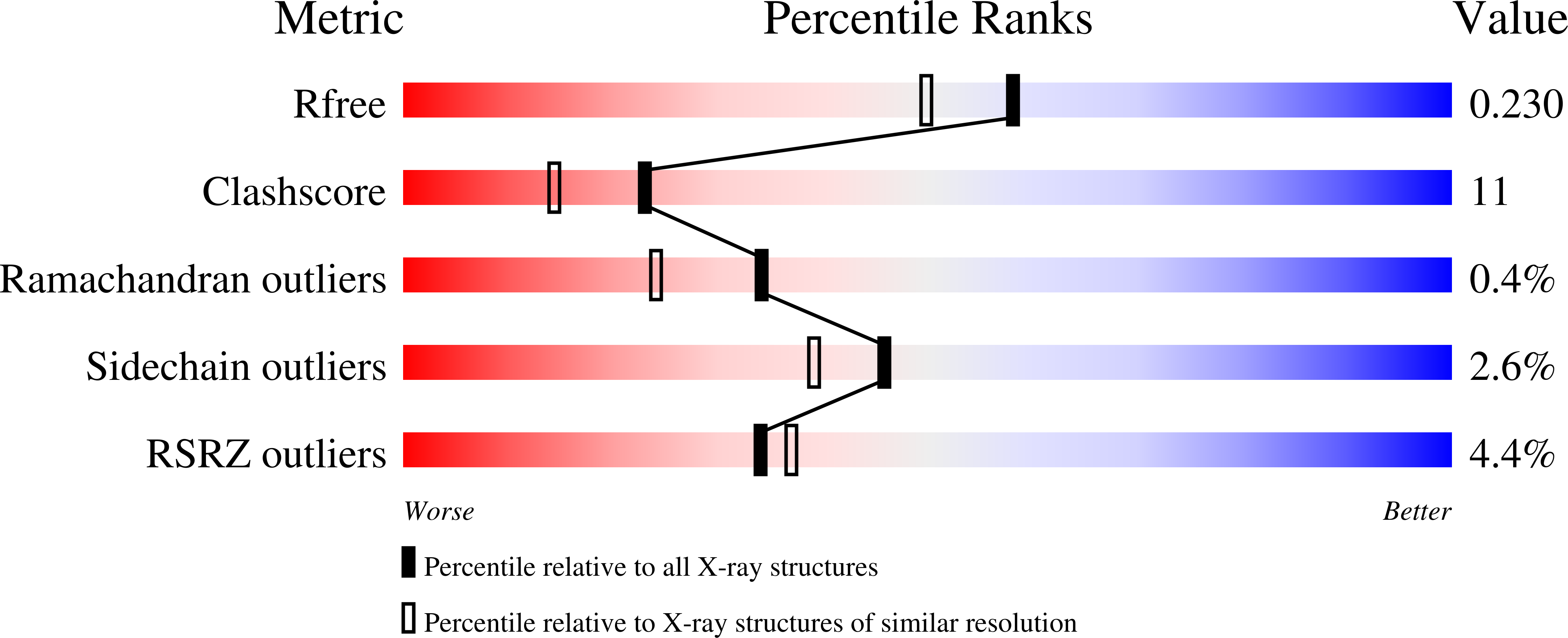Crystal Structure of Unsaturated Glucuronyl Hydrolase Complexed with Substrate: MOLECULAR INSIGHTS INTO ITS CATALYTIC REACTION MECHANISM
Itoh, T., Hashimoto, W., Mikami, B., Murata, K.(2006) J Biol Chem 281: 29807-29816
- PubMed: 16893885
- DOI: https://doi.org/10.1074/jbc.M604975200
- Primary Citation of Related Structures:
2AHF, 2AHG, 2D5J - PubMed Abstract:
Unsaturated glucuronyl hydrolase (UGL), which is a member of glycoside hydrolase family GH-88, is a bacterial enzyme that degrades mammalian glycosaminoglycans and bacterial biofilms. The enzyme, which acts on unsaturated oligosaccharides with an alpha-glycoside bond produced by microbial polysaccharide lyases responsible for bacterial invasion of host cells, was believed to release 4-deoxy-l-threo-5-hexosulose-uronate (unsaturated glucuronic acid, or DeltaGlcA) and saccharide with a new nonreducing terminus by hydrolyzing the glycosidic bond. We detail the crystal structures of wild-type inactive mutant UGL of Bacillus sp. GL1 and its complex with a substrate (unsaturated chondroitin disaccharide), identify active site residues, and postulate a reaction mechanism catalyzed by UGL that triggers the hydration of the vinyl ether group in DeltaGlcA, based on the structural analysis of the enzyme-substrate complex and biochemical analysis. The proposed catalytic mechanism of UGL is a novel case among known glycosidases. Under the proposed mechanism, Asp-149 acts as a general acid and base catalyst to protonate the DeltaGlcA C4 atom and to deprotonate the water molecule. The deprotonated water molecule attacks the DeltaGlcA C5 atom to yield unstable hemiketal; this is followed by spontaneous conversion to an aldehyde (4-deoxy-l-threo-5-hexosulose-uronate) and saccharide through hemiacetal formation and cleavage of the glycosidic bond. UGL is the first clarified alpha(6)/alpha(6)-barrel enzyme using aspartic acid as the general acid/base catalyst.
Organizational Affiliation:
Division of Applied Life Sciences and Division of Food Science and Biotechnology, Graduate School of Agriculture, Kyoto University, Gokasho, Uji, Kyoto 611-0011, Japan.
















